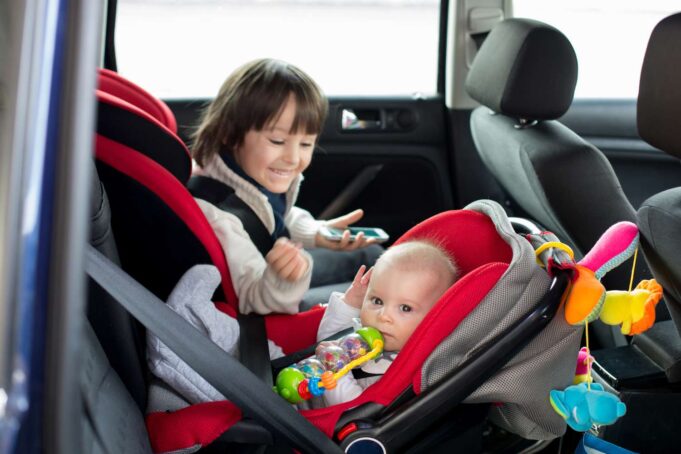Ensuring the safety of your child while on the road is a paramount concern for every parent and guardian. As your little ones grow and develop, their car safety needs will change, making it essential to select the correct car seat that matches their age, height, and weight.
This guide offers in-depth insights into choosing the right vehicle seat at every developmental stage.
I. Infant Car Seats (0-12 Months)
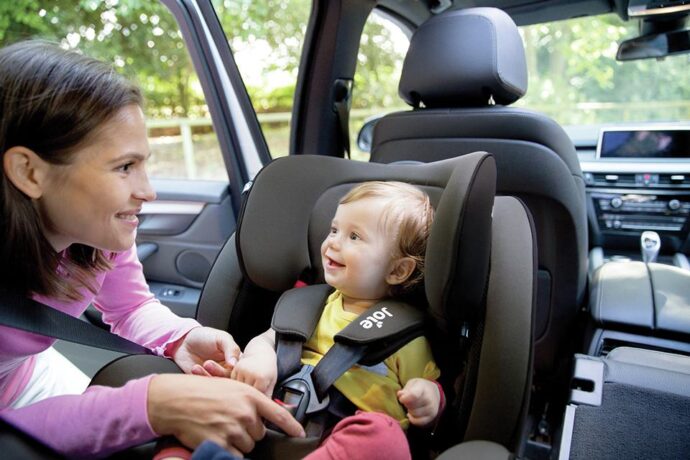
Infant car seats are meticulously crafted for our youngest passengers. These seats are constructed with a rear-facing design, a strategic choice that best protects a baby’s delicate head, neck, and spinal cord. Given that infants have not yet developed strong neck muscles, this design ensures that in the event of sudden braking or a collision, the force is distributed over their entire body.
Proper installation is not just a recommendation—it’s a necessity. Studies have consistently shown that correctly installed car seats significantly reduce the risk of severe injuries. It’s worth investing time to read the manual, perhaps watch installation videos, or even consult with certified technicians who offer vehicle seat checking services.
II. Convertible Seats (1-3 Years)
As your child transitions from infancy, convertible car seats become the next best step. Their prime feature is their adaptability. Initially, they serve as rear-facing seats and can be later transformed into forward-facing seats as your child grows and nears the seat’s weight and height limits.
It’s worth noting that the American Academy of Pediatrics suggests keeping children rear-facing for as long as possible, as it’s the safest position. When the moment to switch comes, ensure that the transition is smooth, understanding the new settings, harness positions, and adjustment mechanisms.
III. Combination Car Seats (2-7 Years)
A step further in the world of car seat evolution brings us to combination car seats. Designed as a middle-ground solution, they serve both as harnessed seats and later as booster seats.
Their longevity provides parents with a cost-effective solution that accompanies the child’s growth over several years and fits their age for a car seat. Harnessing should continue until your child outgrows the height or weight limits set by the seat manufacturer, post which you can switch to the booster mode.
IV. Booster Seats (4-12 Years)
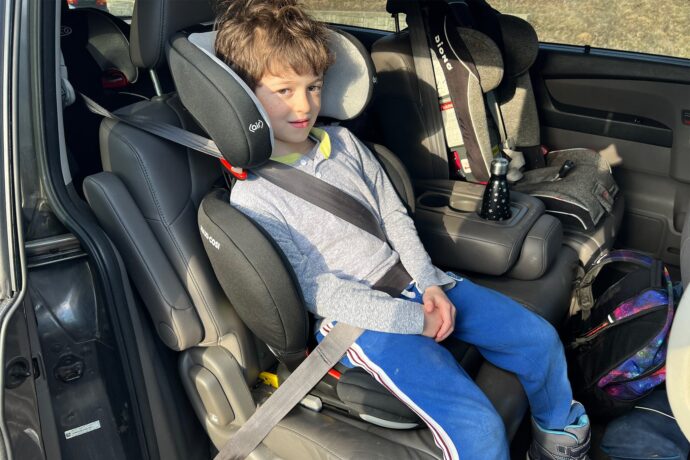
As children grow, they still need that additional lift to ensure the car’s seat belt fits them correctly. Enter booster seats. There are two primary types: high-back boosters that provide added neck and head support, and backless ones, offering more portability.
Both types are designed to position the seat belt effectively on a child’s body, ensuring optimal protection. The booster seat’s role is crucial because it aligns the seat belt so that it runs across the stronger parts of your child’s body, reducing injury risk.
V. Seat Belt Use (8+ Years)
Eventually, the day comes when your child is ready to transition from a booster seat to the car’s regular seat belt. This transition isn’t purely age-dependent; it’s more about whether the seat belt fits your child correctly.
The lap belt should lie snugly across the upper thighs, not the stomach. The shoulder belt should fit comfortably across the chest, not cutting into the neck or face. As parents, setting a consistent example by always wearing a seat belt can also instill the habit in children.
VI. Choosing the Right Seat for Your Child
When it comes to selecting the right car seat, a myriad of factors come into play. Apart from your child’s age, height, and weight, you must also consider the compatibility of the car seat with your vehicle.
Car seats come with exhaustive manuals detailing their specifications, installation procedures, and safety features. It’s also prudent to consult online reviews, safety ratings, and even other parents for first hand feedback.
VII. Importance of Proper Installation
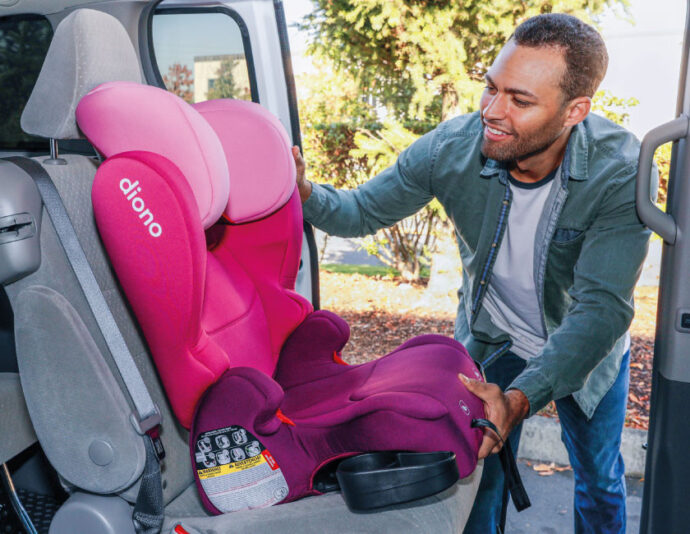
Alarmingly, a significant number of car seats across the country are not installed correctly, leading to reduced efficiency during accidents. Parents have two primary installation options: the traditional seat belt or the LATCH system, which stands for Lower Anchors and Tethers for Children.
Irrespective of the method chosen, ensuring tightness is key. The pinch test, wherein you should not be able to pinch any slack in the harness at the child’s shoulder, is a good measure. If in doubt, never hesitate to seek professional assistance.
VIII. Staying Up-to-Date with Car Seat Regulations
In today’s fast-paced world, child car seat safety standards are continually adapting. They shift and refine, mirroring the newest findings from scientific research and cutting-edge technological improvements. As products and recommendations advance, it is of utmost importance for parents and guardians to remain informed. An invaluable step to stay abreast of changes is registering your vehicle seat with its manufacturer.
Doing so ensures you receive timely notifications, especially regarding any potential recalls. Additionally, safety shouldn’t be a passive endeavor. Proactively making periodic checks on recognized safety websites ensures you’re implementing the latest best practices, guaranteeing your child’s maximum protection.
IX. Travel Safety Tips
The joys and challenges of travel bring with them specific considerations when it comes to child safety. Be it a family vacation where you’re renting a car, flying to a distant relative’s home, or simply hailing a taxi for a short commute, the foundational principles of seat safety remain unchanged. Some airlines, recognizing the importance of in-flight safety, have provisions allowing the use of car seats for young passengers.
This not only keeps the child safe but also offers them familiar comfort. With taxis or rideshare services like Uber or Lyft, it might be tempting to forgo the car seat just once, but consistency is crucial. It takes just one accident to change a life forever. Always ensure your child is securely fastened in their car seat, irrespective of the mode of transport.
X. Second-Hand Car Seats: Yay or Nay?
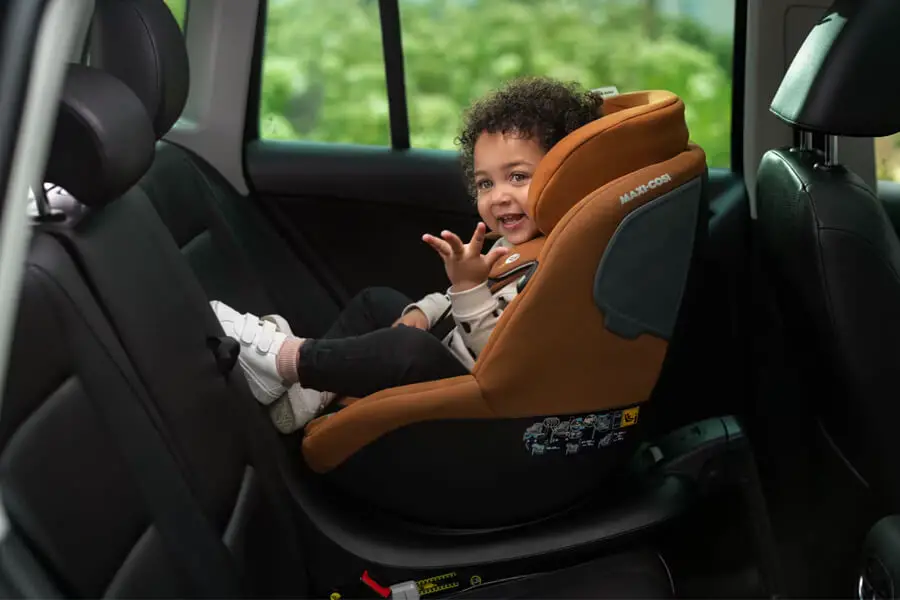
In a world where sustainability is becoming increasingly important, purchasing second-hand items, including car seats, can seem both eco-friendly and budget-friendly. While the appeal of cost-saving is undeniable, there are serious concerns to address when considering used car seats. A primary concern is the seat’s history: Has it witnessed any accidents? It’s vital to remember that not all damages are visible.
Even seemingly insignificant mishaps can compromise the structural integrity of the seat, reducing its efficacy during crucial moments. Moreover, seats come with expiration dates, often overlooked in second-hand transactions. These expiration dates exist for a reason, as materials can degrade over time. To safeguard your child’s safety, always ensure you’re making informed decisions. If there’s any uncertainty regarding a second-hand car seat’s history or condition, it’s invariably safer to invest in a new one.
Conclusion
The journey from infancy to childhood is peppered with numerous milestones, and ensuring your child’s safety during car rides is a consistent concern throughout. This guide aims to simplify the complex world of auto seats, offering clarity at every developmental stage. Always remember, while roads and destinations change, the priority of your child’s safety remains constant.

